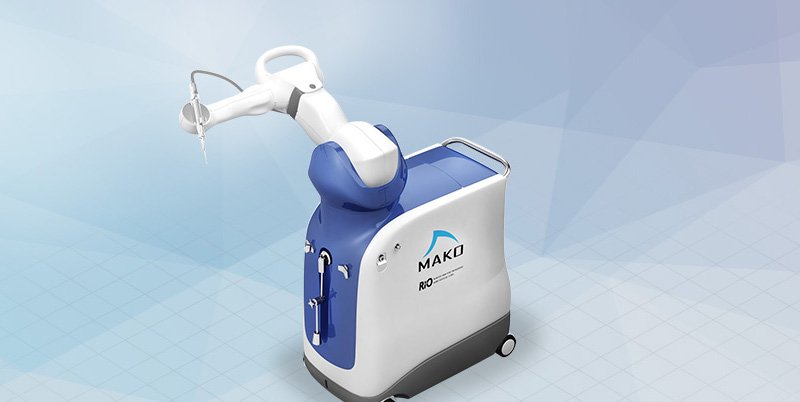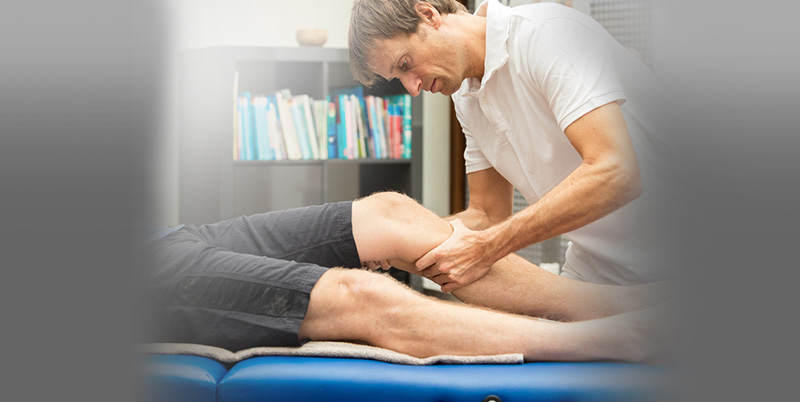Total Hip Replacement
Returning to Driving
Discharge Instructions after Total Hip Replacement
Congratulations on your new hip! You are going home after a successful total hip replacement. Although there is still much work to do, we have already achieved a lot. So, when you get home, take a deep breath and relax. The benefits of a total hip replacement are great, but they do take a while to be realized.
Hip precautions
For the first 3 months after your hip replacement, it is important that you follow your hip range of motion precautions. Doing so makes it extremely unlikely that your hip will dislocate (come out of the socket).
Your hip replacement is very stable, so you do not need to be paranoid about these precautions but you do need to be aware of your precautions and follow them for the first three months after your surgery.
There are two simple rules that you are to follow:
- Whenever you are sitting and whenever you get in or out of a seated position (i.e. flex or bend at the hip or waist), keep your knees separated a shoulder width or more. For example, whenever you are sitting in a chair, bed, commode, or car keep your knees separated. When you get in or out of these seated positions, it is important to keep your knees separated.
- If you are already sitting down, do not lean forward to pick anything up off the floor. Use your “reacher/grabber” to pick things up from the floor or leave them there until someone else can pick the object up for you. Do not try to put your shoes on in a conventional manner.
If you follow these very simple rules, the likelihood that you will dislocate your hip is very, very low (<1%). At the end of three months, you no longer need to follow these precautions. After three months, you may cross your legs when sitting or lying down.
When you are lying in bed your hip is in a very safe position, but it is helpful to sleep with a pillow between your legs for the first 6 weeks after surgery. When you are walking, your hip is also in a very safe position and you do not need to worry about any range of motion precautions.
Here are some additional things that we want you to know about your hip and what to expect over the next several days to months:
Wound care
You should leave the dressing on your incision until you are seen in the office for your post operative visit. As long as the edges are sealed the dressing is waterproof and you may shower when you get home. If the dressing gets water underneath it, it is okay to change it, but leave the mesh piece on. As long as there is no drainage from the incision you may leave the wound open to the air and continue to shower. If drainage continues after removing the dressing, please call the office. Do not place any ointments, lotions, or creams on your wound. A change in your rehab protocol may be necessary.
Once the dressing has been removed you may continue to shower as long as there is no drainage. Allow soapy water to run over the incision, but do not scrub the incision. Pat the incision dry with a towel after your shower. Please avoid submerging your incision in a bath, pool or hot tub for a minimum of 4 weeks after surgery! If your incision has not completely healed by 4 weeks (i.e. there is still a scab on any part of your incision) please wait to begin any of these activities until it has completely healed.
If you have staples on the incision they will be removed about 10-14 days after your surgery. Again if drainage from the incision continues at this time please call the office prior to having the staples removed.
Swelling
Swelling of the hip and leg after a hip replacement is normal. There are some things that you can do, however, to minimize this problem.
Ice the hip frequently for the first two to three weeks after surgery. It is particularly helpful to ice after you have done your exercises or been on your feet for a while.
Homemade Ice Pack Recipe:
Ingredients:
- -2 parts water
- -1 part rubbing alcohol
- Combine ingredients in Gallon size zip-lock bag. Please double bag. Place in freezer at
- Least one hour. Mixture will be a soft set slush.
When using Ice Pack:
- Place a thin towel between ice and skin. Apply ice for no more than 30 minutes
- At a time. Allow skin to rest for 30 minutes to 1 hour between applications. Do
- Not sleep with the ice on your skin.
Swelling of the entire leg is also normal. This will slowly improve but may last for as long as several months. To help minimize the swelling, please follow these recommendations:
First, take a break in the late morning and the late afternoon/early evening and lie down and elevate the leg on several pillows. To effectively reduce swelling, your foot should be above your heart. This requires that you are lying down. Sitting with your foot propped up will not help.
Also, do your ankle pumps and wiggle your toes. This makes your muscles help remove some of the swelling.
Avoid prolonged periods of sitting over the first 7-10 days after surgery. We recommend that you not sit for more than about 45 minutes to one hour before you get up and move around or lie down and elevate your leg.
Bruising
You may develop bruising of the operative leg, particularly around the hip area. Some patients even get bruising and swelling into the knee region. This is normal and expected. Men may even get bruising and swelling of the scrotum. This is also normal after a hip replacement and you should not be alarmed by it. The bruising will gradually go away on its own as the body resorbs the blood.
Blisters
Some patients may develop blisters around the hip and/or the incision. Although they can be alarming in appearance, they pose no significant risk to your hip replacement. They may leak some clear fluid for a period of time but eventually a scab will form and they will heal. We recommend that you just “ignore” the blisters and allow them to heal on their own.
Weight Bearing, Walkers, Crutches and Canes
You may place as much weight onto the operated leg as your pain, comfort, common sense and balance will allow. You will not damage your hip replacement by placing your weight on the leg. You may feel free to progress from your walker to a cane whenever you feel safe, comfortable and confident. One clue is when you are carrying your walker more than using it for balance and safety. You may seek the advice of your physical therapist prior to making a decision about advancing from the walker to the cane. It is best to use the cane in the hand opposite of the hip replacement. When you no longer feel that a cane is necessary for pain, balance, and common sense, you may discard the cane. The length of time that it takes to get off of your aids is not important and will not determine the success or failure of your hip replacement. However, you have our permission to walk without support whenever you feel that you are safe. Some of our patients do this within two weeks of surgery; others take six weeks or so. Remember that common sense and safety is the key.
Pain Medication
We will provide you with prescriptions for your pain medications. You will need to have these filled at your pharmacy. Our goal is to make your pain manageable (not absent, since this is usually not realistic) and to allow you to progress with your therapy for your hip.
Most patients will receive a prescription for pain medication. Start taking up to 2 tablets every 3 to 4 hours as needed. As your pain starts to subside you should begin to decrease the dosage or increase the time interval between the pain pills. It is usually quite helpful to take your pain pills about one hour prior to your planned therapy.
Although it is unusual for you to be pain-free by six weeks after surgery, we do recommend that you stop taking narcotic pain medications at that time and use over-the-counter medications (for example, Tylenol and/or Aleve).
Pain medications are not your only strategy for controlling the pain. We also recommend that you ice your hip and elevate your leg periodically. These help control the swelling and your pain. The better job that you do in controlling your swelling, the less pain that you will have. We also recommend that you get some other stimuli into your life. For example, if you only focus on your hip, the pain generally seems worse than if you get some other distractions/stimuli to keep you from focusing only on the pain. For example, watch a movie, invite some friends over, play a board game, or call some friends. Anything that allows you to distract yourself from your hip can be helpful. As you get more mobile, getting out of your home is also helpful.
You can expect some degree of discomfort in your hip for about 1-3 months. By six months, very few of our patients are experiencing more than minor pain.
Driving an automobile
You are allowed to operate an automobile when you are comfortably walking with a cane or without any support. For some patients, this will be within 2-3 weeks and for others it will take longer. When you are walking with a cane (or with no support), you have adequate control of your leg to operate your car. However, you should also use your common sense. If you do not feel that you are safe to drive a car, wait until you feel that you are ready. Keep in mind not to drive if you are still taking pain medications.
Coumadin, warfarin, and blood thinners
You will be on a blood thinner Aspirin or Coumadin (also called warfarin) or Lovenox or Xarelto for 4 weeks after your surgery. If you are on a Coumadin, a blood test will be done once or twice per week to monitor your levels of anticoagulation (blood thinning). Depending upon the results of this study, your dosage of Coumadin may be increased, decreased or kept the same. It is common that we need to change the dosage during these 4 weeks. We have used this strategy to prevent blood clots for many years and have found it to be very safe and very effective.
Sleeping and Eating Problems
Some patients have difficulty sleeping for a few months after a hip replacement. It will improve with time but it is a difficult problem to treat. We have not found anything that completely eliminates the problem, other than time. We do not advocate sleeping pills, unless you are accustomed to using these prior to your surgery. We avoid prescribing sleeping pills for this problem, as we have not found them to help much and they can cause other significant side effects. Rather, we recommend that you use your pain medications 1 hour prior to bedtime to help you relax, control your pain, and facilitate sleep. It is also helpful to work hard during the day so that you are sleepy at bedtime. This seems to help as well. For many patients, you just have to work through this problem and let time solve it.
Some patients lose their appetite for several weeks after a hip replacement. This is common and it will improve with time. Until it improves, try to eat several small meals a day rather than trying to force down large meals.
Constipation
The use of narcotic pain medications, iron and a decrease in your mobility after hip replacement frequently causes some degree of constipation. We would recommend, particularly if you are susceptible to constipation, that you take a stool bulking agent (for example, Metamucil) and, if necessary, milk of magnesia to prevent significant problems with constipation. Please avoid taking so much of these, however, that you develop diarrhea. This will be a difficult problem for you if you need to make many trips to the bathroom shortly after your return home. In addition, make sure you are well hydrated with fluids such as water and fruit juices.
If the above has not been helpful here is another plan that may be more beneficial:
- Day one: Colace or Senokot with Stimulant, take as directed on package insert.
Day two, if no results from day one:
- Dulcolax tablets, two tablets twice this day.
Day three, if no results from day one:
- Dulcolax suppository
- If no results by the p.m., use a Fleet enema
Iron can make your stools dark or black. This color might persist for several days after completion of the Iron.
Expectations for Pain Relief after Total Hip Replacement
Total hip replacement is a great operation. It is highly predictable in terms of improvement in pain, function and quality of life. However, you must be patient to achieve many of these wonderful benefits of the surgery. The high quality pain relief that characterizes a good total hip replacement frequently takes 3-6 months to achieve. Patients predictably improve for up to a year after a hip replacement.
Stated differently, it is normal for you to still have some pain in your hip for as much as 3-6 months after your surgery. The pain relief will come, but you should not expect great relief of pain in less than this time. Higher demand activities (such as going up and down stairs) frequently take 6-9 months before patients feel comfortable doing them. It is permissible to go up and down stairs whenever you can safely navigate them but it will take much longer to do them normally and with great confidence.
Follow-up Appointments
Your first post-operative appointment in our office with Dr. Fleischman will usually be scheduled for 2-4 weeks following surgery. Generally, your staples will be removed at 10-14 days after surgery. Your next appointment with Dr. Fleischman will be 4 months from your surgery. X-rays of your hip will be obtained at both appointments. You may schedule an appointment to see Dr. Fleischman at any time during the intervals between scheduled appointments should any problems arise.
Questions or Problems
Congratulations! You are now the proud “owner” of a hip replacement. We are confident that it will prove to be of great benefit to you. Work hard, be patient, and remember why we performed the surgery - to give you many years of excellent relief of pain and improvement in function and quality of life!
Please do not hesitate to call us if you have any questions, problems or confusion about your hip or your recovery.



























